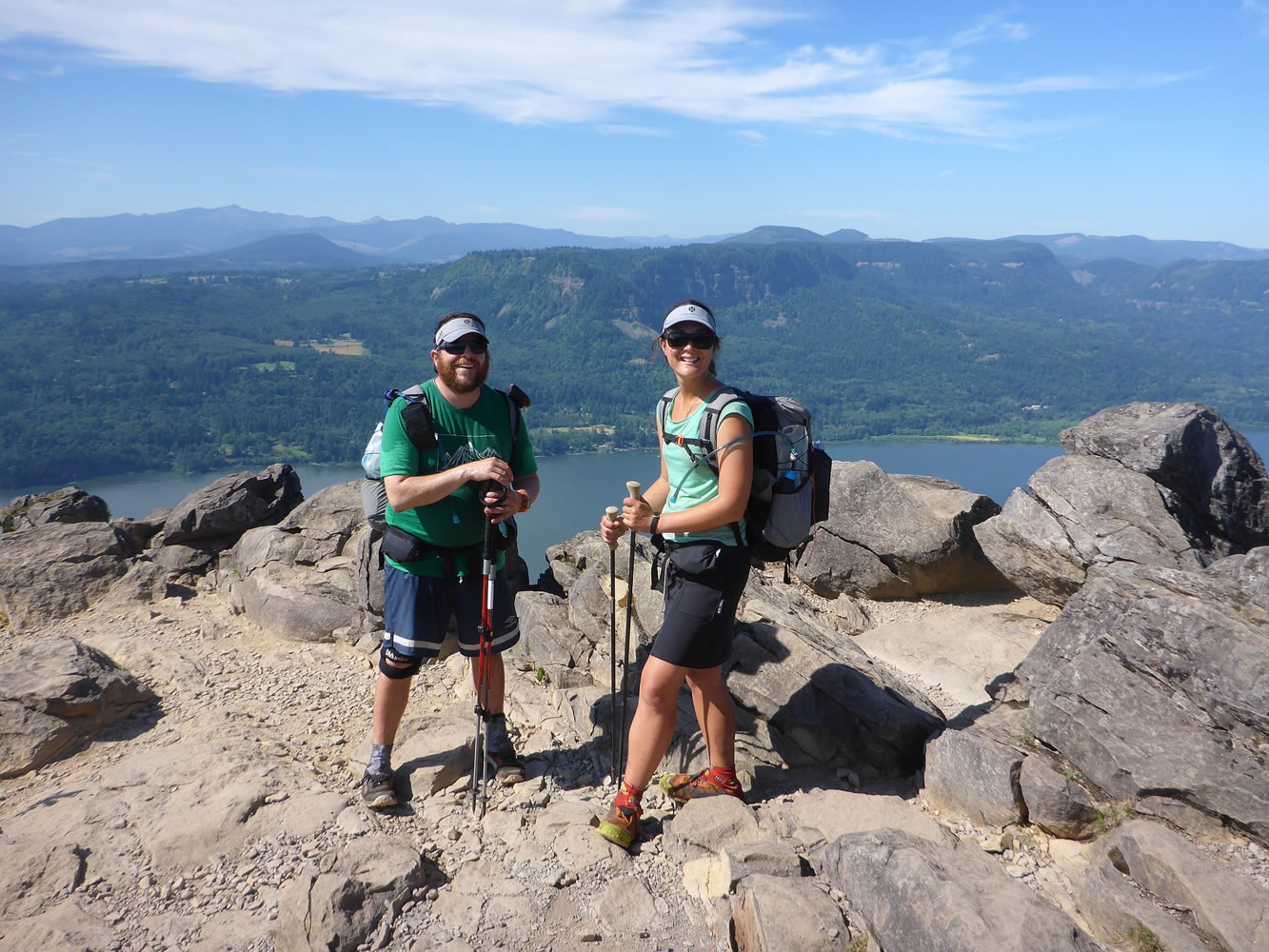For Whitney La Ruffa and Brian Boshart, the Chinook Trail is much more than a proposed route encircling the Columbia Gorge from the metro area to Maryhill.
The two Portland hikers, along with Liz Thomas of Colorado, started walking at Clark County’s Moulton Falls Park in late June and 11 days later finished at Angels Rest at the west end of the Gorge in Oregon.
The approximately 290-mile trek was done all on foot — except for the one mile crossing of the U.S. Highway 97 bridge between Maryhill, Wash., and Biggs Junction, Ore.
“Part of the intrigue of it was it’s in our backyard,” said La Ruffa, 37, a hardwood lumber broker and president of the American Long Distance Hiking Assocation-West. “How many places in the world can you walk out of your house, get a 45-minute ride and go on a close to 300-mile walk through some of the most beautiful areas of the Northwest?”
For the uninitiated, the Chinook Trail is the brainchild of Don Cannard and the late Ed Robertson, lifelong hiking partners and Vancouver elementary school principals. In 1986, standing on the summit of Silver Star Mountain, Cannard and Robertson dreamed of a trail going through the Columbia Gorge.
The Chinook Trail vision uses portions of existing trails. In 1994, the first new section connecting Washington’s Larch and Silver Star mountains was completed.
La Ruffa wasn’t looking to make a statement about the Chinook Trail. Last fall, he simply was planning his two-week summer vacation for 2014.
La Ruffa has hiked the Appalachian Trail (2,180 miles), Allegheny Highlands trail (330 miles), John Muir trail in California (211 miles), Wonderland trail around Mount Rainier (97 miles) and Tahoe Rim trail (175 miles).
“I needed another trail that’s similar — between 100 and 300 miles that’s on the West Coast — that I could go hike,” he said. “I just happened to stumble across a listing for Chinook Trail.”
He did research and learned the Chinook Trail is a work in progress and far from a finished route.
“I took it upon myself to put together the hike,” La Ruffa said. “I wanted to hike through the Gorge and I wanted to do something on no one had ever done, so I just started pulling this route together.”
He invited Boshart, 42, a gift store owner, and Thomas, 28, a professional long distance hiker, to join him.
“I live here,” Boshart said. “I go in the Gorge all the time. This just tied everything together. It connected it all.”
Boshart has hiked the Pacific Crest trail (2,650 miles), twice, the Appalachian trail, the Continental Divide trail (3,000 miles), the Pacific Northwest trail (1,200 miles) and the Oregon Desert trail (800 miles).
Thomas has hiked the Appalachian trail twice and holds the AT speed record for an unsupported hike, plus the PCT, CDT, Tahoe Rim and Colorado trail (500 miles).
The trio faced challenges along the way. They could not locate Snag Creek trail, which would have put on them on the Pacific Crest trail many miles sooner and lessen the road miles.
State Highway 141 from Husum to White Salmon and U.S. Highway 97 from the junction with state Highway 14 down to Maryhill State Park had narrow shoulders and were not the most pleasant of walks, La Ruffa said.
“It wasn’t like an Oregon-Washington experience,” he said. “It’s more like an east-and-west experience.”
Boshart and La Ruffa both rave about the folks they met.
“They were just very welcoming and interested in what we were doing and inquisitive,” La Ruffa said.
Boshart said routes that blend trails with sections of road are the future of long-distance hiking.
“It’s too much work to put together a whole trail system,” he said.
La Ruffa agreed.
“For something like the Chinook Trail, I think they’ll never have the funding or the means to make a continuous foot path through the Gorge. There’s also private land.”
He said he believes Chinook Trail advocates need to encourage hikers to get out and walk a route similar to his.
“As more and more people use the trail, and it becomes more of a thing people do, that will eventually bring the awareness and funding,” said La Ruffa.
He also said the Chinook Trail Association should “prioritize the roughest spots.”
Among those would be fixing Snag Creek trail and finding a better way between Husum and White Salmon.
La Ruffa and Boshart said they’d hike their Chinook Trail route again.
“If I did it, I’d do it in another 20 years to see how it’s changed,” La Ruffa said.




